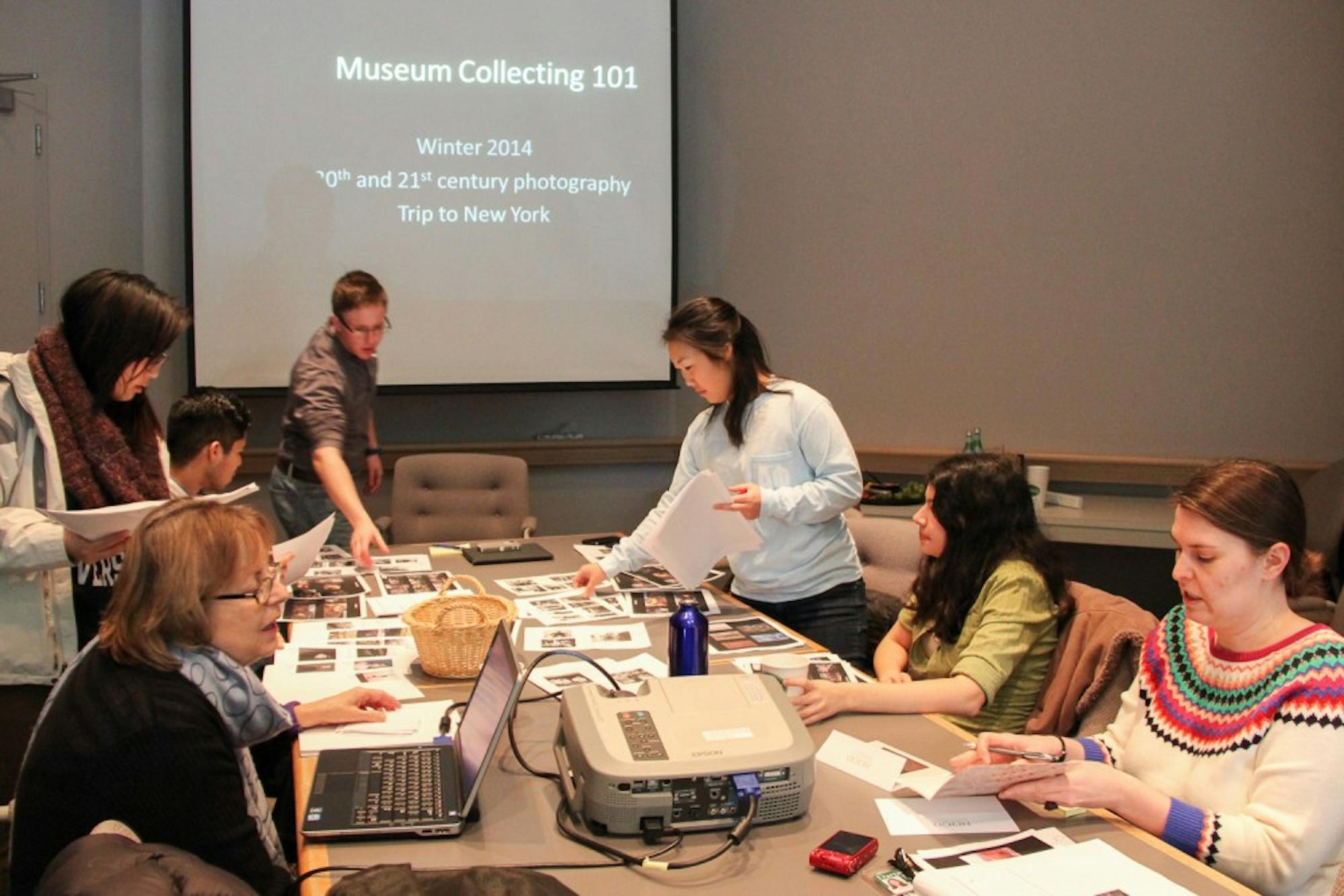Armed with a $10,000 budget, seven students traveled to New York City over the weekend to select a photograph for the Hood Museum of Art. After visiting various galleries, museums and private collections, the students chose “Selma-to-Montgomery March for Voting Rights in 1965,” by James Karales to add to the Hood’s collection.
The students, participants in the Hood-sponsored Museum Collecting 101 program, met with program directors Amelia Kahl and Katherine Hart to finalize the decision on Monday.
The photograph by Karales will cost the museum about $5,000, program participant Kate Bradshaw ’14 said. The Hood may use the remainder of the budget to purchase one of three second-choice photographs selected by the group, which are by Tim Hetherington, Paul Fusco and Thierry Cohen.
Bradshaw is a member of The Dartmouth staff.
“Selma-to-Montgomery March for Voting Rights in 1965” shows three young marchers striding in-step along a grassy ridge, followed by a line of people stretching into the distance. Dark clouds seem to swirl as they gather above the scene. Karales, who worked as a photojournalist for Look magazine in the 1960s, is best known for documenting the civil rights movement and the Vietnam War.
Several students said that seeing the images in person altered their opinions of certain works of art, which they had learned about during the preparatory meetings.
Over the weekend, students visited the Yossi Milo Gallery, the Howard Greenberg Gallery, the Danziger Gallery and the private residence of Frank and Mary Ann Arisman, which houses their personal art collection.
International Center for Photography trustee Andrew Lewin ’81, who sponsored the trip, invited the group to visit an exhibition at the center titled “What is a Photograph?” Participants also attended a dinner with Lewin and the Arismans.
Iris Yu ’14 said she especially enjoyed visiting the private collection, which contained collector items alongside photographs that had been purchased for $50 at a flea market.
“He taught us that appreciating art is all about the personal connection to the piece, not the market value,” she said.
Juliana Park ’14 said that hearing about the images from gallery employees and seeing them in-person was a unique experience.
“What struck me was how the image size, composition and type of paper affected the overall feel — something we couldn’t see through the website,” she said.
At the Danziger Gallery, students observed photographs by Cohen, whose nighttime cityscapes highlight the ecological contamination and pollution that humans emit in their environment.
David Cordero ’16, a group participant, said Cohen’s work was humbling, causing him to think about human effects on nature.
“New York is considered the city that never sleeps, but there is so much light pollution that you can’t even see the stars,” Cordero said.
The class, called Museum Collecting 101, introduced students to the world of art collecting and curation through several introductory sessions in January.
During the weekly sessions, students met with Kahl and Hart to study photographers from the 20th and 21st centuries. The students also learned about the criteria that curators use when purchasing art on behalf of a museum, like preservation, lighting and budgeting.
Yu said the program made her feel more confident in her ability to speak intelligently about art.
Cordero said he believes that though experiences like the Museum Collecting 101 program are frequently advertised to students, they are often under-appreciated.
The program, first offered in 2002, has a different theme each time it is offered. This year, the class studied modern and contemporary photographers.
“The class at the Hood is a perfect example of what makes Dartmouth unique,” Lewin said. “Empowering students to buy the art on behalf of their college is like nothing I’ve ever heard for any other university.”
The program was open to all students regardless of major and covered all transportation and hotel costs.




